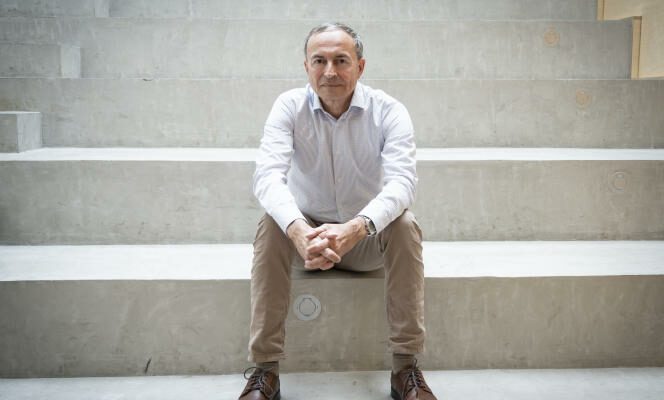Virus hunters don’t always have a good reputation. To unearth the nugget – the most pathogenic, the most infectious, the one that will make the best scientific journals salivate – they are said to be ready for anything, or almost. Elbowing, pulling the blanket at them, and the carpet from under the competitor’s feet, even taking a few liberties with health security… Marc Eloit is not of this species. Of course, he likes to roam around, going to collection sites and collaborating with the Pasteur Institutes in Asia or Africa with which, from the Parisian parent company, he has been collaborating for fifteen years. Admittedly, he recognizes himself as competitive. After his discovery, in 2021, of the bat virus closest to SARS-CoV-2 ever identified to date, he admits to having pushed his entire team to “working a lot to publish as soon as possible”. No question of being grilled by American cowboys. But during the triumphal release of the article In Naturein February 2022, he never failed to say that nothing yet indicated a relationship between his pathogen and the one that caused the pandemic, which was later confirmed. And especially to insist on “the first merit of the Laotian teams”. Not really the custom of the virological Wild West.
A little flavor of revenge
“A matter of justice”, he said simply. But also temperament. In reality, Marc Eloit does not feel quite a virus hunter. “Fisherman suits me better”, he smiles. No doubt it should be seen as a nod to his passion for fly fishing, which led him to buy a house in Lozère. A little flavor of revenge too. “When he arrived at the Institut Pasteur in 2008, some felt that the use of high-throughput sequencing for pathogen discovery was more of a power hammer than precision science”, remembers Professor Marc Lecuit, who then welcomed him into his laboratory. The interested party has fun. “Those who made fun of our methods said that we were going fishing. That we made no prior assumptions. Nothing could be more false. We do not sample just anywhere. You have to know the terrain. And then, you have to know how to read the sequences that come out of the computer, to identify those that may or may not be of interest. As one learns to read a river. We do all of this. »
We are the team of twelve people from the “pathogen discovery” laboratory. “It may sound like a cliché, but it really is a team effort. I am the conductor. Without the instrumentalists, no music”, insists this lover of opera and the songs of Georges Brassens. The “I”, he reserves it for the past, for childhood in Morbihan, for preparatory classes in Rennes.
You have 67.92% of this article left to read. The following is for subscribers only.
